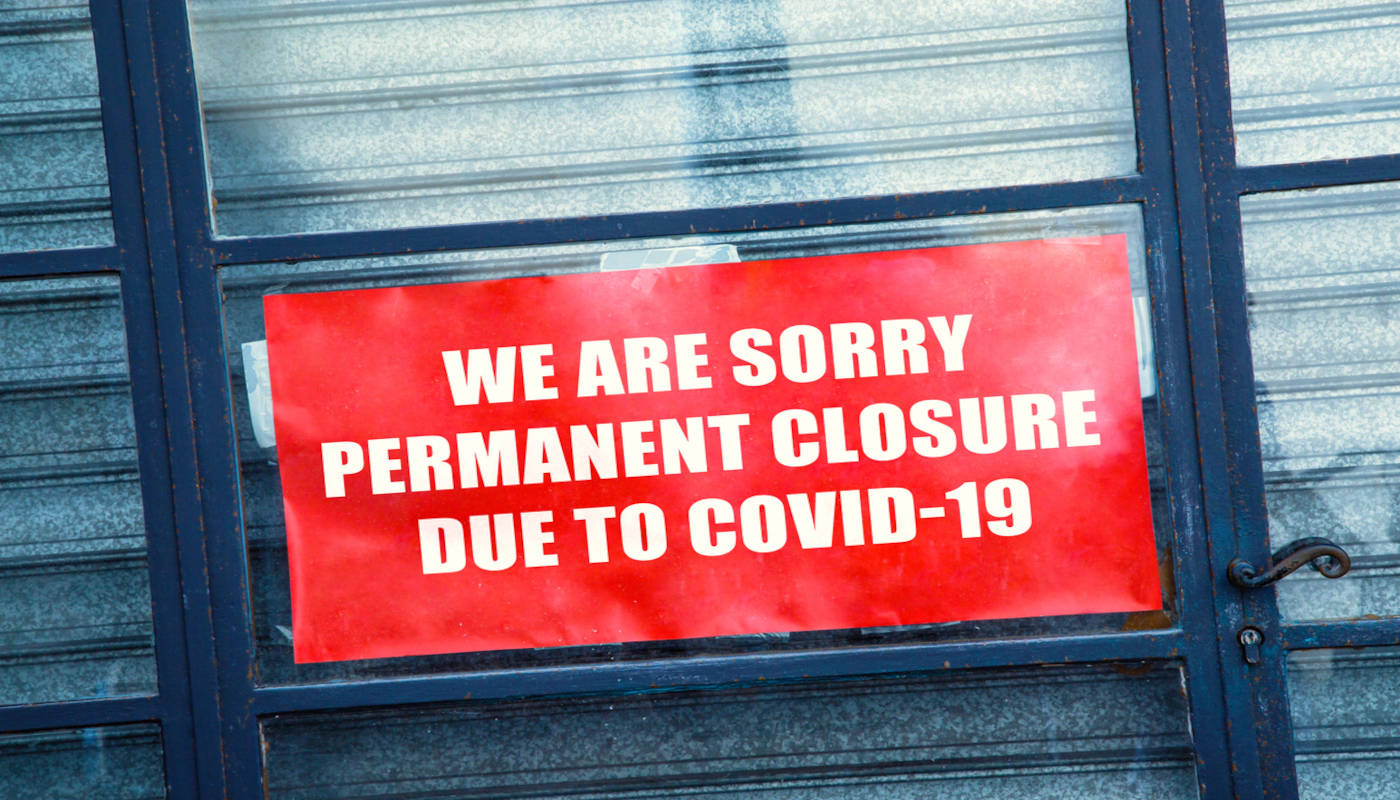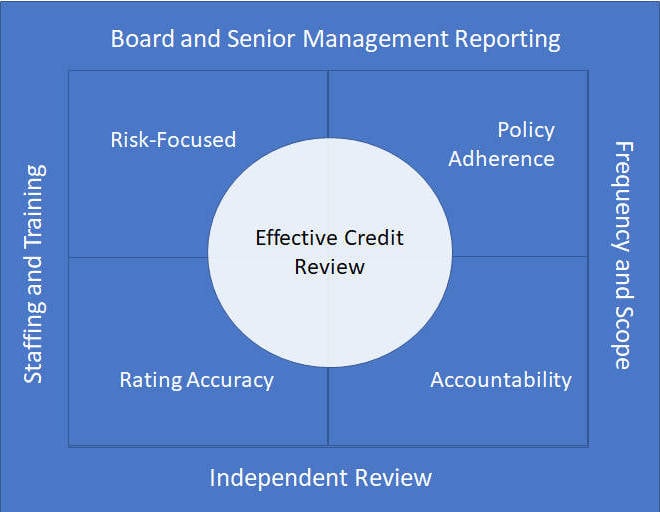
In today's Covid-19 world - plagued by high unemployment, historic debt and soaring bankruptcies - a return to basics for loan and credit review has never been more important. Severe credit risks are now found within and across all asset classes and types, and the need for effective credit review even transcends that experienced during the global financial crisis (GFC), when a single asset class (subprime mortgages) caused the most damage.
Credit review teams, in short, must tighten their belts, punch-in the overtime and deepen the analysis of loans by segments - e.g., by geography, loan type, size and complexity. They must also remember the one of the commandments of trading: the first loss is the best loss.
The CARES Act has enabled the development of prudent policies for loan modifications and troubled debt restructurings (TDRs). Credit risk professionals therefore need some level of forbearance, but must also apply risk rating criteria in an objective fashion. (After applying such criteria, though, a bank may need to acquire additional capital to weather the increasing volume of emerging bad debt.)
Credit risk teams will also need to consider growing their ranks, as demand for credit review personnel is certain to be on the rise. Clear areas of need include on-boarding of specialists who know how to work with certain industry groups and are familiar with distressed asset investment and management, including chapters 7 and 11 of the bankruptcy code. Adherence to updated regulatory guidance will also be key.
Furthermore, as the enduring impact of the economic shutdown begins to manifest itself in this year's third and fourth quarters, bank supervisors will need to take a much harder look at the allowance for loan and lease losses (ALLL) and allowance for credit loss (ACL) methodologies and assumptions. The loan-forgiveness aspect of the Paycheck Protection Program (PPP) also must be considered, along with new operational risks associated with possible application of rules related to TDRs and non-accruals.
To cope with an unprecedented level of uncertainty, we must return to credit review basics, while also applying imaginative structural analysis.
Guidance on Credit Risk Review: Back to Basics
There is much discussion in bank supervision around “identifying, measuring, monitoring, and controlling risk.” In consideration of pandemic-driven risk themes, a quartet of regulators - The Federal Reserve Board, the Federal Deposit Insurance Corporation, the National Credit Union Administration and the Office of the Comptroller of the Currency - recently issued new guidance for credit review.
This guidance suggests that while models are helpful for assessing credit risk, they are not a panacea. Indeed, a comprehensive credit review strategy requires a return to the basics - including proper loan review and assurance processes, loan portfolio management and proper risk rating of credit.
Stress testing also remains paramount. Possible capital weaknesses in several of the top-tier banks were revealed in recent stress-test results for the largest 19 U.S. banks. Applying stress-tests, and identifying and measuring possible losses by counterparty, is even more critical for mid-tier, super-community and community financial firms.
Soaring Bankruptcies and Declining Output
What economic factors are necessitating this rethinking of credit risk review policies and procedures? The trend toward bankruptcy is a good place to start.
According to the American Bankruptcy Institute, 2020 is looking to be the worst year on record for Chapter 11 reorganizations since at least 2011, when filings exceeded 8,600. Year-over-year, in July 2020, Chapter 11 reorganizations were up over 52% from the same period in 2019. Moreover, on an annualized basis, and at the 97.5% confidence level, 2020 is on a run-rate of between 7,011 and 7,549 bankruptcy filings - and I personally believe we will top 8,000.
While bankruptcies have soared, we have simultaneously seen a dramatic reduction in output. Indeed, real GDP declined at an annual rate of -32.9% in the second quarter of 2020. Though there are some signs of latent recovery, the jury remains out on the shape of the curve, partly due to the disconnect between financial asset prices and the real economy. Although traded financial asset prices look somewhat V-shaped, the broader private debt market is not so pretty.
The Real Economy vs. Traded Risk
One way to think about the “real economy” is how bank stocks are trading. Large domestic banks - the so-called systemically important financial institutions (SIFIs) - tend to be a good reflection of the overall health of the domestic economy. As a group, SIFI stocks are now trading down 30% from 52-week highs.
When we look at the market composite indices of traded equity, we can see that we moved from a low point around March 26th of over -38.4% on 3/26 to today's -7.4%. This is not the real economy, but, rather, traded risk that allows larger-trading banks - and novice investors with lots of time - to rally certain traded-risk products.
There is a bit of the “greater fool theory” at play here. In 2007, in the early stages of the global financial crisis, ex-Citibank executive Chuck Prince infamously said: “As long as the music is playing, you've got to get up and dance.” Shortly thereafter, George Soros retorted that the music had already stopped.
In the current COVID-19 world, the music has not only stopped - the turntable has fallen out of the 70th floor window and shattered on the pavement. We are in totally uncharted territory.
While there are green shoots that reflect increased durable goods orders and growing economic resilience, the real overhang to the market is the lack of jobs (continuing claims at over 16 million) and a lack of spending, which will only rebound when consumer confidence is restored.
Maintaining Credit Quality
Under these trying circumstances, financial institutions need to reconsider their credit quality strategies.
All good credit portfolios begin with establishing sound policies and procedures for identifying and measuring credit quality. This must be supplemented by internal management reporting, which ensures that proper policies and procedures are being followed and communicated.
Credit quality maintenance requires three basic things:
-
Excellence in loan policy guidelines that provide, in clear terms, the risk tolerance of the bank or credit union and the proper limits and controls that cover each loan category that the bank has chosen to develop;
-
Awareness of roles and responsibilities for assessing credit quality, with the primary responsibility for rating accuracy (upgrades and downgrades) coming from the first line of defense: the loan officers and underwriters themselves; and
-
Regular and routine independent assessment of credit quality, adherence to policy and procedure, and appropriate board- and senior-management-level reporting.
Loan policies can be tricky. Banks and credit unions tend to oversimplify their loan policies, creating what might be better referred to as operating procedures. And while procedures are indeed critical, especially when it comes to the use and possible misuse of automated credit risk management (CRM) and workflow solutions, loan policies must be periodically assessed for robustness.
Credit review doesn't necessarily have to reside in one specific department, nor do all aspects of a review need to be done by a single group; however, best practices must include a firmwide understanding of how credit risk review works.
It is also vital to maintain independence and to ensure that there is an effective challenge to first-line-of-defense risk review.
Elements of a Sound Credit Risk Review System
A sound CRM system, whether automated or paper-driven, requires a risk rating system. This risk rating system should allow for an appropriately “fine-grained” categorization of credit risk. While we are all familiar with the “five C's” of credit (i.e., cash-flow, collateral, capital, capacity and character), a rating system should always capture the probability of default (i.e., how likely a borrower is to fail to meet payment and/or covenant obligations) and the collateral position of the bank.
Together, these two elements - the likelihood of default and collateral - can provide a direct quantification or a subjective qualitative assessment of expected credit losses. For this type of identification and risk assessment to be effective, ratings should be reviewed frequently - and rating upgrades and downgrades should be communicated and tracked through a centralized system.
In today's environment, such an assessment might start with an institutional overview of the firm's portfolio and a stratification of credits by those industries most impacted by the pandemic - considering loan type, complexity, payment history and existing risk ratings. Operational issues on how to deal with heightened levels of impending loss should be discussed and working groups should be put in place (as needed) to incorporate added risks to existing CRM frameworks. These credit review components are identified in Figure 1 (below).
Figure 1: Elements of a Sound Credit Risk Review Framework

The objective at the present time is to get “in front of” looming defaults. In this higher risk environment, if it is determined that essential CRM elements are missing, banks must remain open to adjusting their processes on the run.
There are some estimates that suggest that more than 20% of businesses - large and small - will default over the next 24 months. Very few banks can earn an appropriate return with 20% non-accruals; therefore, it is imperative to work fast and hard at identifying potential problem loans, seeking (1) an active account monitoring plan; and (2) an agreed upon risk mitigation strategy. This might require taking in new forms of debt or equity to keep viable firms afloat.
Independent Review
An independent credit risk review need not be from an external third-party. Indeed, in many smaller firms, CRM systems have been established that effectively leverage existing staff to independently review and report on portfolio credit quality. That said, it remains sound practice to ensure that, from time to time, the CRM framework itself is assessed for robustness.
In both large and small firms, where there is disagreement over ratings, there often is an arbitration process and a review committee for such disputes. Many firms run such a process through their standard loan committees; others have a separate process altogether, or a special assets function that will handle disputed ratings.
Like rating changes, disputes over rating assignments should be tracked as exceptions. However, disputes that center around a single loan officer or a single independent reviewer might warrant closer inspection.
Many smaller financial firms (e.g., larger community and super-community banks) have chosen to hire an external third party directly to assist with loan reviews. Others are revising their CRM process to cope with today's unprecedented circumstances. Either approach can work, provided that independence is assured.
Parting Thoughts
Credit risk, and the management thereof, remains the dominant risk issue for virtually all financial intermediaries - including credit unions, banks, mutual funds, pension funds, and other direct and indirect investment vehicles.
Over the past 30 years, there have been major strides in the improvement of credit risk assessment and management - particularly with respect to credit derivatives; Basel II and III (and the advent and use of dual and other complex risk-rating systems); counterparty and credit VaR models and methods; and off-balance sheet securitizations. Moreover, we've seen far better management information systems and internal reporting, and more effective use of credit scores and artificial intelligence.
It is safe to say that 2020 feels less like perfect eyesight and more like the perfect storm. One thing that has become increasingly clear through recent regulatory guidance is that expectations for robust internal risk management have not been substantially relaxed. Nowhere is this more evident than in credit review with the issuance of the aforementioned Interagency Guidance on Credit Risk Review Systems.
Lamentably, regulators have been silent on credit risk associated with investment securities. Management of municipal securities, as well as corporate and other securitized products, should not rely exclusively on analysis from rating agencies.
Independent credit review is needed. While downgrades have temporarily slowed, it's incumbent upon each firm's credit risk management team to rate all earning assets appropriately.

Thomas Day is the Chief Credit Officer of Themis Capital Management Group. He is a public speaker, an author and an engaged investor in distressed assets who is highly interested and actively involved in digital smart-contracts that represent debt obligations. He can be reached at tday@themis-capgroup.com and www.linkedin.com/in/thomaseday.